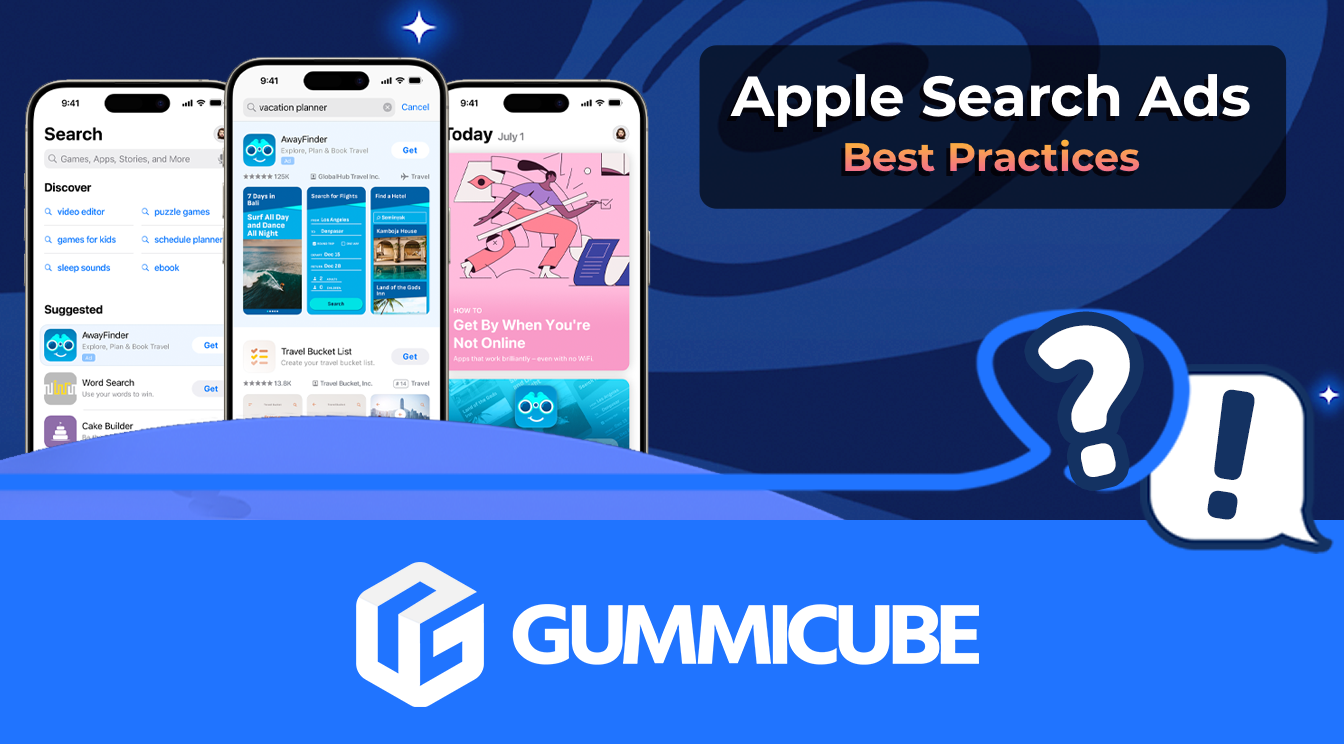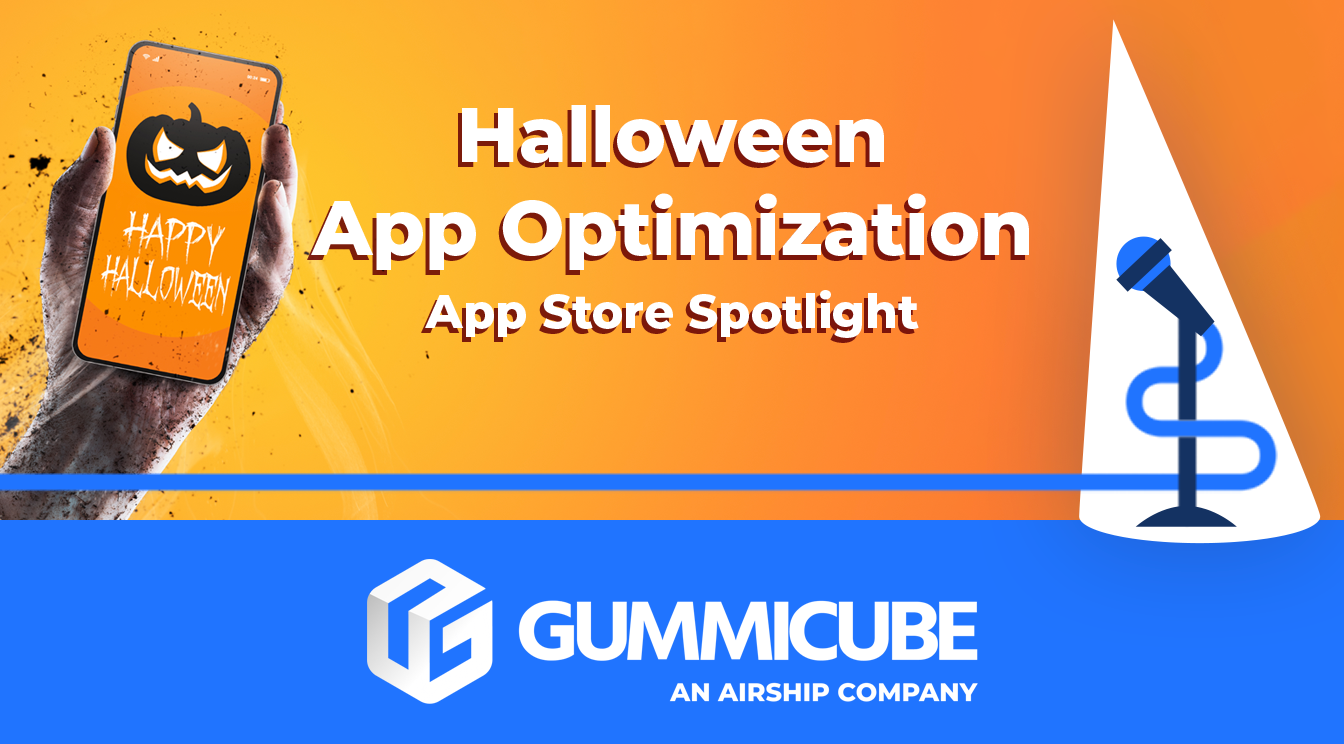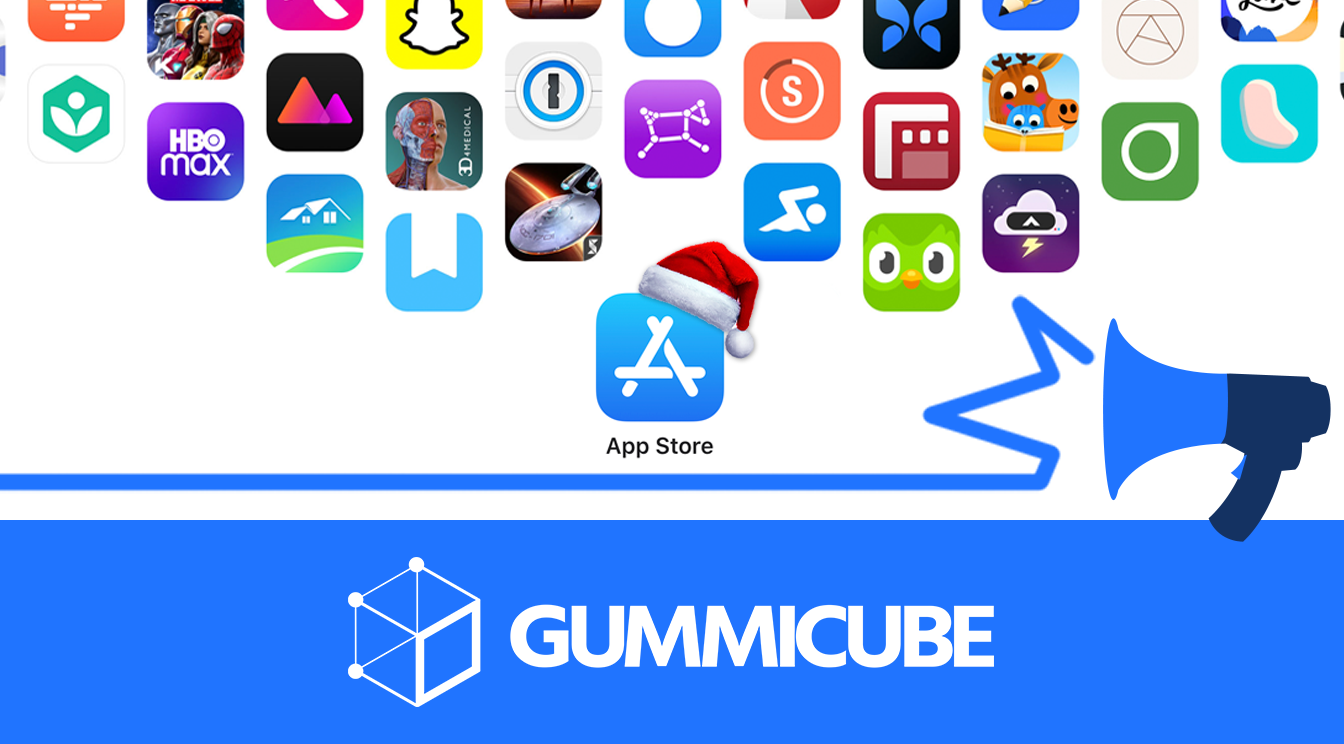
5 Best Practices for Apple Search Ads
Posted on July 3rd, 2024
Are you leveraging Apple Search Ads the right way? Take a look at these recommendations to optimize your paid campaigns and target the right users.

The launch of the iPhone and the App Store in 2007 heralded a new era in mobile technology. More specifically, it led to the explosive growth of smartphones and related technologies such as app development. The expansion of the smartphone space led to the creation of new terminologies and vocabulary specific to the industry. Here are some of most common terms and acronyms in the mobile app space and mobile marketing:
Cost per install (CPI) or cost per acquisition (CPA) is the money an advertiser/marketer pays an advertising network after a consumer downloads and installs a specific app. This is irrespective of the number of impressions an app generates. It is important to note that some advertisers use the term cost per download (CPD) to refer to cost per install. However, CPI and CPD are different terms because a consumer may download an application and fail to install it.
Cost per impression is the amount a marketer pays an ad display network whenever an online ad is displayed on a web user's device. Every time a consumer sees the ad, the display network counts it as one impression. Nevertheless, cost per impression is highly controversial for several reasons. For instance, an ad could be displayed on a webpage part that is not easily visible to site visitors such as the footer section. As such, an advertiser could end up paying for ads that consumers never saw. To resolve this problem, some modern CPI programs exclude actions such as page reloads and failure to scroll by the section where an ad is displayed.
Lifetime value or customer lifetime value (CLV) is a measure of the total worth of a customer to a business over a given period (usually over the entirety of a business relationship). This is a key metric because it enables business owners to make reliable future operational plans and allocate their financial resources more appropriately. Moreover, you can also use this metric to determine whether a young and growing business is financially viable over the long term.
Simply put, retention refers to the ability of a brand to attract repeat customers. Retention is closely tied to the term "retargeting," which refers to activities aimed at re¬-attracting customers who were loyal to a brand and abandoned it at some point in the past. Some of the strategies businesses use to improve their retention rates include better service delivery, replying customer queries fast, competitively pricing goods and services and continuous innovation.
Cost per mile is the amount of money marketers pay ad display/delivery networks per 1,000 impressions. Unfortunately, all impressions under this category are valid irrespective of whether a consumer takes an action or not. As such, most marketers do not consider CPM a reliable and effective marketing method. In fact, tech savvy entrepreneurs use CPM impressions to keep their brands in front of consumer eyeballs. Nevertheless, you can include a CPM strategy in your marketing plan if prior usage resulted in high click through rates (CTRs).
Cohorts or cohort analysis is a mobile analytics technique that enables entrepreneurs/businesses to identify consumer segments that fit a specific description or fall into industry-specific/different categories. In most cases, cohort analysis focuses on consumers that took a desirable action within a specific period. For instance, you can use cohort analysis to determine the number of unique mobile device owners who use your brand's app monthly. You can also use it to determine the average revenue per new, the number of repeat customers and churn rate. Most of the free and paid mobile analytics solutions have a cohorts feature. A good example is Google Mobile App Analytics that has an easy to use cohort analysis feature (you can use it to evaluate the behavior of customer groups in relation to a common attribute).
A software development kit is a toolkit that programmers and developers use to create mobile apps. As such, it contains all the tools required to build a fully functioning application including supported programming languages, relevant libraries, coding language documentation, and a few examples. Although there are platform agnostic SDKs, some are platform-specific, meaning they only support the development of apps unique to a platform or mobile OS ecosystem. Of course, some SDKs support open source or paid software design tools. In fact, Apple's mobile SDK supports a programming language called Swift that was designed solely for developing iOS, OS X, tvOS, and watch OS apps. What's more, Apple has released the Swift programming language under an open source license, meaning programmers and developers can tweak its source code to suit their app development needs.
Application programming interface (API) is probably the most widely mobile technology term. In simple words, an API is a set of protocols, rules, and commands that govern the way different software tools/programs should interact with each other. The aim is to enable one software programs to access and deploy the functions of another program using a universally applicable set of rules/commands. For instance, social networking sites (Facebook, Twitter, and LinkedIn), B2C platforms (Uber and Airbnb), and business solutions (Salesforce and Slack) have APIs that developers and programmers can use to access specific resources like consumer data. Some APIs also enable web users to access server-side resources such as login details (usernames and passwords). Moreover, APIs have become popular and essential because you can use them to build a business on top of another established company's web platform. For example, Salesforce allows developers to access its API and use it to build business solutions that are hinged on its cloud-computing infrastructure.
A key performance indicator (KPI) is a metric used to measure the performance of a brand or its ability to achieve pre-defined goals. KPIs vary widely depending on market/industry segment, target audience, type of goods/services on offer, and business size. Examples of common mobile KPIs include total app downloads, revenue per user (RPU), monthly active users (MAUs), LTV, session length, cost per lead, traffic-to-lead ratio, and lead-to-customer ratio.
The growth of mobile marketing and mobile app development has led to the creation of industry-specific terms and acronyms. Examples of popular mobile terms include CPI (cost per install), CPI (cost per impression), LTV (lifetime value), CPM (cost per mile), cohorts, SDK (software development kit), API (application programming interface), and KPI (key performance indicators).

Are you leveraging Apple Search Ads the right way? Take a look at these recommendations to optimize your paid campaigns and target the right users.

Ghostly happenings are among us... and in your app listing too? If you aren't leveraging the power of app seasonality to make relevant tweaks to your store listing you're leaving precious engagement and conversions on the table.

Developers on the iOS App Store should plan in advance of the upcoming Holiday Schedule to allow enough time for apps to get approved during the busy holidays.